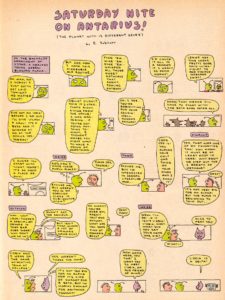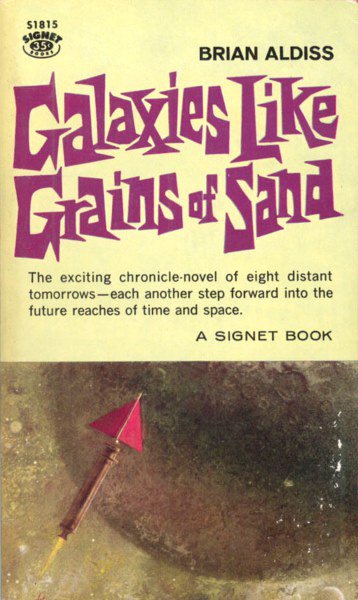


11/01/2016
 Borjas no bore. October 20th I went to an event organized by the Center for Immigration Studies to hear Professor George Borjas present his new book, We Wanted Workers. Borjas explains the title in his Introduction:
Borjas no bore. October 20th I went to an event organized by the Center for Immigration Studies to hear Professor George Borjas present his new book, We Wanted Workers. Borjas explains the title in his Introduction:
(In a footnote, Borjas gives us the German original: "Wir riefen Arbeitskräfte, es kamen Menschen.")Reflecting on the European experience with the millions of guest workers [from the 1950s onwards], the Swiss playwright and novelist Max Frisch made perhaps the single most insightful observation about immigration when he quipped: "We wanted workers, but we got people instead."
Borjas is a lively and engaging speaker. I bought a copy of his book, and stood on line to have him sign it. When I got to him, he immediately recognized me from a chance encounter eight years ago, which I had completely forgotten.
That was of course embarrassing, with a line of secondary emotions coming along behind the embarrassment: gratification (How nice that a bigfoot researcher, a Harvard professor, remembers me after so many years!); annoyance (If he can remember an obscure opinionator, why can’t I remember a serious and important scholar, working in a field that I often write about?); to anxiety (Am I losing my marbles? He’s only five years younger than me …)
I recommend the book in any case; and I further recommend Borjas in person, if you get a chance to see him speak. I only regret that he is, to borrow Dr Johnson’s self-description, "a retired and uncourtly scholar," with no taste at all — with, in fact, I think, a strong dis-taste — for political contention.
Borjas lays out a solid, factual, quantitative basis for the kinds of arguments we make here, with gentlemanly good humor and scholarly rigor. I'd love to see him make his case in argument with the open borders shills, on TV talking-head shows or the campaign trail … but that’s not his choice.
All strength to Prof Borjas anyway, and all success to his new book.
Two essays on race. This month produced two notable essays dealing with race. One was notable for dishonesty and incoherence; the other for its clarity and straightforward good sense.
The dishonesty and incoherence was of course in defense of the No Such Thing As Race dogma, hereinunder NOSTAR.
NOSTAR is a key axiom in our state ideology. It is, however, so contrary to everyday experience, common sense, and elementary biology that media outlets feel obliged to publish stern affirmations of it from time to time, rather as state newspapers in communist countries used to publish long editorials, for use in study sessions by the Party faithful, affirming the infallibility of Marxist-Leninism.
(The outstanding exhibit here, according to sinologist Simon Leys, was an editorial in the Peking People’s Daily at the time of the Lin Biao affair in 1971, instructing readers that extreme leftism was a right-wing deviation.)

So here was science journalist Faye Flam laying down the Party line at Bloomberg News, October 3rd.
Race is perhaps the worst idea ever to come out of science. [Science’s Biggest Blunder by Faye Flam; Bloomberg News, October 3rd 2016.]
Really? Worse than phlogiston? Worse than spontaneous generation? Worse than the luminiferous ether?
"We never use the term 'race,'" said Harvard geneticist Swapan Mallick, an author on one of the papers revealing the latest DNA-based human story.
So what term do Dr Mallick and his colleagues use when discussing local common-ancestry variations within a species? If "race" was good enough for Darwin, why isn’t it good enough for him?
"We're all part of the tapestry of humanity, and it’s interesting to see how we got where we are."
Indeed we are, and indeed it is. It is equally true, though, that we are all part of the tapestry of the genus Homo, of the family Hominidae, of the order Primates, of the class Mammalia, of the the phylum Chordata, of the Animal Kingdom. All of that is pretty interesting, too. What’s your point?
One of the world’s most prominent American scientists of the mid-1800s, Samuel Morton, collected skulls from all over the world and attempted to demonstrate that those of European ancestry had the world’s biggest heads and were, so he claimed, intellectually superior.
Except that "there is no evidence that Morton believed this or was trying to prove it." [Scientists Measure the Accuracy of a Racism Claim by Nicholas Wade; New York Times, June 13, 2011]
Scientists subsequently realized that Morton was wrong — about whose heads were biggest and the connection between head size and intelligence.
Leaving aside the fact that Morton was not much interested in such a connection, brain size (which correlates with head size) does correlate with intelligence. [Neuroanatomical Correlates of Intelligence by E. Luders, K.K. Narr, P.M. Thompson, and A.W. Toga; National Institutes of Health, 2009.]
[Geneticist Joseph] Graves sometimes quizzes his students by showing them an image of a man and asking them to guess where he comes from. It appears to show someone most Americans would identify as a black man, and Graves says people assume he’s from Africa or an African American community in the U.S. But he’s from the Solomon Islands, which are in the South Pacific.
Are there really people who don’t know this sort of thing? Fifty years ago, in then-wellnigh-monoracial England, I attended classes at University College, London with a young man whose skin was black. He was from Burma. (I recall his name as Man Man Tin, although the internet records no trace of such a person. In those easy-going days, with no offense intended or taken — he was a cheerful and sociable fellow — we gave him the nickname Rin Tin Tin. That would have gotten us permanently rusticated nowadays.)
And so on. It gets wearisome refuting this mendacious gibberish.

How refreshing, then, a few days later, to see that Jared Taylor had posted the talk he gave to September’s press conference on the Alt Right.
Given the loose nature of the movement [i.e. the Alt Right], there are people who consider themselves "Alt Right" but who disagree on one or more of these points — except one. The entire Alt Right is united in contempt for the idea that race is only a "social construct." This is an idea that is so wrong and stupid that only very intelligent people can convince themselves it is true.Ah, the sweet clear wine of truth!Race is a biological fact. Does anyone think that the differences between Danes and Pygmies are a sociological illusion? …
There are countless race differences in such things as skull structure, twinning rates, and susceptibility to disease. It is even possible to tell a person’s race from the varieties of bacteria that live in his mouth!
Human races have been evolving separately for perhaps as long as 100,000 years, and evolution has marked their temperaments and mental abilities just as it has their physical characteristics. [What is the Alt Right? by Jared Taylor; American Renaissance, October 11 2016.]
 Slow day at the Pentagon. The other zone of our social life in which state ideologues demand that we pretend to believe preposterous things is of course sex — or, as we are now supposed to say, "gender."
Slow day at the Pentagon. The other zone of our social life in which state ideologues demand that we pretend to believe preposterous things is of course sex — or, as we are now supposed to say, "gender."
Most of the preposterous things they want us to pretend to believe are in aid of an assault on traditional concepts of manliness. It is therefore not surprising that a key target of the No Such Thing As Sex (NOSTAS) preposterentsia is the military.
A friend with military connections passed on to me a document recently published by the Department of Defense. Title: Transgender Service in the U.S. Military: An Implementation Handbook.
The wretched thing has seventy-two pages. Sample, from pages 60-61:
Scenario 11: Use of Shower Facilities
A transgender Service member has expressed privacy concerns regarding the open bay shower configuration. Similarly, several other non-transgender Service members have expressed discomfort when showering in these facilities with individuals who have different genitalia.
Key takeaway(s)
This scenario illustrates the importance of open lines of communication between the Service member and the commander. It also depicts steps a commander may take to permit privacy, based on Service policy.
Service member responsibilities
Commander responsibilities
- If you have any concerns about privacy in an open bay shower setting, you should discuss this with your chain of command.
- Consider altering your shower hours.
You may employ reasonable accommodations when/if you have a Service member who voices concerns about privacy. This should be done with the intent of avoiding any stigmatizing impact to any Service member. If permitted by Service policies, some of these steps may include:
- Facility modifications, such as installing shower curtains and placing towel and clothing hooks inside individual shower stalls.
- In cases where accommodations are not practicable, you may authorize alternative measures to respect personal privacy, such as adjustments to timing of the use of shower or changing facilities
- Take proactive steps through the chain of command to ensure that expressions of discomfort don’t escalate into harassment or hazing.
- Consult the SCCC for guidance on how to institute such measures.
I repeat, there are 72 pages of this. That’s more than half as many pages as the Seaman’s Pocket Book from which I learned all the essentials of service as a rating in the Royal Navy.
Oh, and if you're wondering what an SCCC is, it’s a Service Central Coordination Cell: basically an email address to which you can send queries about policy in your service.
The SCCC e-address for the Army is . If you want to send frivolous or spoof questions to the Army, use that address. Don’t worry that you may be wasting their time; to judge by that 72-page handbook they've just put out on servicepersons confused about their sex, time is a thing they have plenty of in today’s military.
Antarius, The Planet With 12 Sexes. On a related theme (I guess), Greg Cochran mused on how 
things might be if there were more than two human sexes.
Many species have several different kinds of males (a few have different kinds of females as well). For example, a lizard species in California has three different kinds of males — aggressive orange-throated guys that successfully dominate blue males, sneaky yellow guys that get past orange males guarding a big territory, and blue mate-guarding males (that are also cooperative — possibly a green-beard gene) that successful guard females from sneaky yellows. The population frequencies oscillate: scissors, paper, rock. [The Third Sex by Greg Cochran; West Hunter blog, October 26th 2016.]
I’m sorry to say that what this brought to my mind was one of Ed Subitzky’s cartoons from the glory days of National Lampoon forty years ago. Title: "Saturday night on Antarius (The planet with 12 different sexes)."
I think I'll send that link to the SCCCs for all the different services. You never know; we may find ourselves at war with Antarius one of these days.
Does he bill his patients via the web? Just one more on the (approximately) medical beat.

My better half works in Medical Billing, arguing over the phone all day long with doctors, hospitals, patients, and insurance companies.
The other day she reported having dealt with a radiologist named Kwak — Dr Kwak. My lady is unfailingly truthful, so I did not doubt her story, but I was curious to see that Dr Kwak looks like, so I Googled him.
Sure enough, there he is: No Bong Kwak, MD — Specialty: Diagnostic Radiology. No picture, though. Googling further, I find that Kwak is a not-uncommon Korean family name.
I am sure that the Kwaks are a proud and noble lineage, and that Dr Kwak discharges his radiological duties at the highest standards of professionalism. And yes, I know it’s childish to make fun of people’s names, which after all they can’t help. For all I know to the contrary, "Derbyshire" sounds screamingly funny to Korean ears. If so, I do not begrudge them their mirth. Still … Dr Kwak?
And while we are at the intersection of October with names Korean, let’s pause in respectful silence for a moment to remember the South Korean Secretary of State murdered by the Norks in the Rangoon bombing of October 1983: Lee Bum Suk.
Galaxies like grains of sand. For the longest time I carried around in my head the easy thumbnail tally of the cosmos: there are a hundred billion stars in our galaxy and a hundred billion galaxies in the observable universe.

That second hundred billion crept up to two hundred billion when I wasn’t looking; and now suddenly it’s increased tenfold.
The scale of the universe, already unfathomable, just became even more so: There are about 10 times as many galaxies as previously thought.
The new number, two trillion galaxies, is the result of work led by Christopher J. Conselice, an astrophysicist at the University of Nottingham in England, published last week in The Astrophysical Journal. [Two Trillion Galaxies, at the Very Least by Henry Fountain; New York Times, October 17th 2016.]
That’s just the observable universe, mind: the one little bubble of objects whose emitted light has reached us since the Big Bang 13.8 billion years ago. The whole shebang is much bigger. It may in fact be infinite: There is an argument for this in Chapter Five of Max Tegmark’s Our Mathematical Universe.
There’s a downside and an upside to knowing stuff like this.
The downside is of course that it further dethrones us. It is only within living memory that we have known there are any other galaxies besides our own, let alone two trillion of the suckers. Not very long before that — a mere handful of generations — our little ball of rock was assumed to be the principal place in the cosmos, and its affairs the primary interest of the Creator.
The upside is that our consciousness, our civilization, our accomplishments seem all the more astonishing as it becomes more and more probable that there are no others like them anywhere, or at least anywhere within several billion trillion miles.
The arguments for this cosmic exceptionalism go back at least as far as Michael Hart’s 1975 paper An Explanation for the Absence of Extraterrestrials on Earth. Tegmark recycles them briefly in the last chapter of his book. (He is out at the most skeptical end of the spectrum for belief in extraterrestrial intelligence: "I've just argued that we're probably the most intelligent life-form in our entire universe.") British science journalist John Gribbin wrote an entire book arguing the skeptical case.
So we are utterly insignificant, but at the same time fantastically unique. There’s something to meditate on, a hundred years on from Einstein’s General Theory of Relativity, which opened the way to serious, informed speculation about these tremendous matters.
Warm happy glow of the month. Home maintenance chore this month has been spackling. I hate spackling.

This is to do with my property’s standalone garage. The garage has a loft. For our first 24 years in this house, we paid no attention to the garage loft. It was a dark, filthy place, clogged with junk from previous homeowners going back to the 1940s.
It didn’t even have a floor, only some random planks thrown across the joists. Nor was there any ceiling. If you went up there — there was a crude, rotting wooden access ladder from below — you risked having your scalp ripped open by roofers' nails. It seems to be a cardinal rule of roofing to use nails two inches longer than necessary when fixing the roof tiles in place.
As the main house silted up with accumulated stuff, though, I began looking for extra storage space. And there it was: a nice unused space, twenty feet square, crammed with the junk of strangers long since passed on to their celestial rewards.
I cleaned it out. I installed a proper pull-down access ladder. I laid a proper floor. I hauled up tremendous 8'×4' panels of drywall and screwed them to the roof beams. I put in windows at each end.
Then, to seal up the seams between panels and hide the screw holes, you have to spackle that drywall.
It’s a tiresome business. You can learn the essentials from YouTube; but the instructors all disagree with each other. This one says to use fiber tape on the joints; that one says no, fiber tape is for pros, stick with paper tape. This one wets the paper tape, this one doesn’t. This one says to spread the joint compound like this; that one says to spread it like that; a third one says to spread it like that but with a turn of the wrist thus. This one uses a special trowel for inside corners; that one says no, just do one wall, let it dry, then do the other. I was getting flashbacks to my time in Ed School amid those endless tiresome arguments about the best way to teach math.
I made all the mistakes amateurs make: used too much mud and ended up sanding three quarters of it off, etc., etc. Still, when I'd finished it didn’t look bad.

I called in my neighbor Charlie to do site inspection. Charlie worked for years in construction. He is a scrupulously truthful man (and a Trump supporter!) After looking over my spackling he declared it "Not bad."
Not bad! That was my warm happy glow of the month right there. Bob Dylan is welcome to his Nobel Prize: I'll take "Not bad" from Charlie.
PermalinkFreedom of speech and thought, such as we still more or less have, are very delicate and easily smashed.
Watching our current elite’s treatment of liberty is like watching a baboon carrying a priceless Ming vase across a stone-paved floor. [Trust judges? I'd rather ask a baboon to carry a Ming vase by Peter Hitchens; MailOnline, October 29th 2016.]
The Americans. The Mrs and I have been binge-watching the TV series The Americans, recommended by a friend.
The premise of the show is that in the late Cold War years of the 1980s, the U.S.S.R. had agents deep embedded in American life, living as ordinary suburban American couples with kids, but on call to carry out espionage missions. Its psychological appeal is to the fantasy we all nurse, from early 
childhood onward, of living a secret life of excitement and danger while keeping up an outward mask of humdrum social normality.
The plotting and characterization is very good, with a narrative "pull" that keeps you wanting to rent the next clutch of episodes. The storylines teeter on the edge of absurdity without ever quite falling over into the void.
Unfortunately I find that I am now in love with Annet Mahendru. When I confessed this to Mrs Derbyshire, she counter-confessed that she is in love with Noah Emmerich. The balance of domestic affections thus remains undisturbed, and we continue to watch The Americans with guiltless pleasure.
Math Corner. The number three doesn’t get the respect it deserves, in my opinion.
Two is all over. We inhabit a universe of pairs: positive and negative, up and down, male and female, liberal and conservative, … there’s no end to the twos.
Three has less of a public profile. Threeness doesn’t have the deep, fundamental quality of twoness.
Not that three is altogether neglected. The Christian god is tripartite; heroes in fairy-tales are granted three wishes; and no-one thinks ill of underwear manufacturers marketing their products as small, medium, and large.
Patriots of many nations celebrate the fact of their flag having three colors. The French actually name their flag for this feature, which keys to the three ideals of the Revolution: liberty, fraternity, equity. English children used to be taught to sing: "Red, white, and blue / What does it mean to you / …," although I suppose this would be considered a racist outrage nowadays.
In math, one of the most striking objects in elementary Measure Theory (dealing with the lengths, areas, volumes, etc. of mathematical figures) is Cantor’s set, which has uncountably many points in it (i.e. too many to match off one-one with the counting numbers 1, 2, 3, …) yet has measure zero. Cantor’s set is arrived at by repeated division of a line segment into three parts; it is best grasped via ternary (base 3) notation.
There is a dark, negative side to threeness, though. Three is often used to slight and marginalize: third-rate, three’s a crowd, third arm inspection (ask one of the older generation of military veterans), etc. The word "triage" has positively sinister connotations. The Hound of Hell had three heads.
This dark aspect was explored at length in Chapter Four of Paul Fussell’s fine book The Great War and Modern Memory. Fussell fills seven pages exploring the role played by threeness in the WW1 combat experience as filtered by the human imagination.
For the poet Charles Sorley the transformation of man into corpse is a three-part action. First, man; then, when hit, animal, writhing and thrashing in articulate agony or making horrible snoring noises; then a "thing."The under-appreciation of three is best seen in the realm of fractions. It is possible to find a ruler marked off in thirds of an inch — I own one — but halves and quarters are far more popular. We say "a quarter of an hour" all the time; when did you last hear someone say "a third of an hour"?
Is there a VDARE.com-relevant angle to any of this? Of course there is!
Looking at the U.S. Census Bureau’s Population Clock the other day, I found myself wondering when the population of our republic will reach a third of a billion. It’s almost there. That day, October 6th, around noon, the clock showed 324,647,530. The rate of increase — births minus deaths plus net immigration — was shown as one person every twelve seconds.
With 8,685,803 to go until we reach the magic number of 333,333,333, and assuming linear extrapolation, we get to a third of a billion sometime in the late evening of January 25th, 2020 (assuming I have done my arithmetic correctly, which should by no means be relied on).
Will there be national celebration? A public holiday? Street parties? I doubt it. Thirdness gets even less respect than threeness.
John Derbyshire writes an incredible amount on all sorts of subjects for all kinds of outlets. (This no longer includes National Review, whose editors had some kind of tantrum and fired him. ) He is the author of We Are Doomed: Reclaiming Conservative Pessimism and several other books. He’s had two books published by VDARE.com: FROM THE DISSIDENT RIGHT (also available in Kindle) and From the Dissident Right II: Essays 2013. His writings are archived at JohnDerbyshire.com.
Readers who wish to donate (tax deductible) funds specifically earmarked for John Derbyshire’s writings at VDARE.com can do so here.